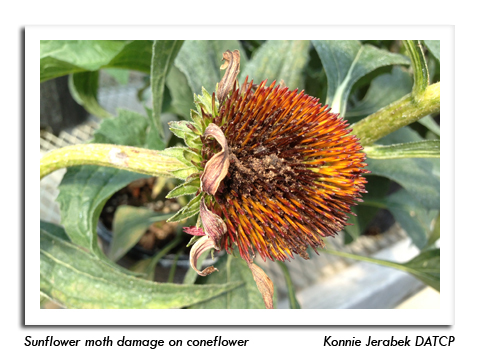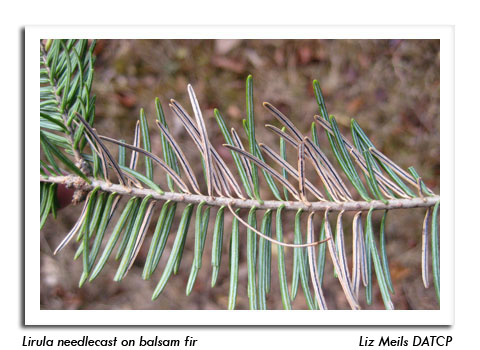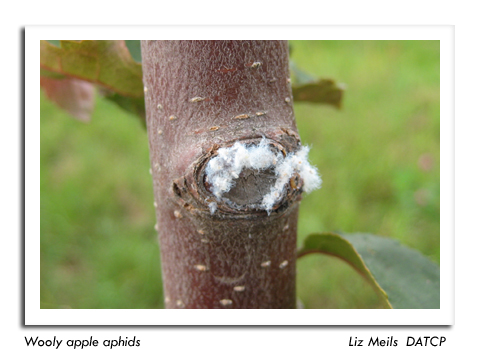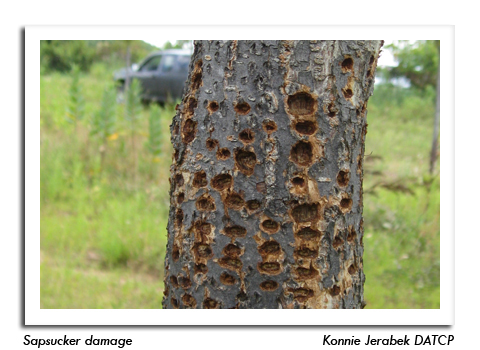
 |
|
|
Nursery & Forest
Volume 58 Number 15 Date 08/15/2013 SUNFLOWER MOTH - This destructive, migratory sunflower pest was reported by a nursery inspector on Coneflower 'After Midnight' in St. Croix County. The larvae initially feed on the florets and later burrow into individual seeds, creating ideal entry sites for the Rhizopus head rot fungus. An indicator of infestation is the presence of tangled mats of webbing on the flower surface. Control consists of an insecticide application made shortly after the flowers open, with subsequent treatments as needed. Removal of infested flower heads is also advised. LIRULA NEEDLECAST - Light to moderate amounts of this needlecast disease were apparent on the lower branches of balsam firs in Sawyer County. Lirula is easily identified by a single longitudinal row of dark spores along the midrib on the undersides of second- and third-year needles. Environmental conditions that favor its development are high humidity, low temperatures and overcrowding or inadequate spacing. As with most fungal disorders, measures that increase air circulation are usually effective in preventing new infections. -- Liz Meils, DATCP Nursery Inspector WOOLLY APPLE APHID - Nursery inspections in the past week found moderate infestations of this aphid, as well as their sticky honeydew, on the branches of crataegus hawthorns in St. Croix County. Woolly apple aphids feed at wound sites (e.g. pruning cuts and cankers) on the trunks and branches of trees, causing knots or galls to form on the twigs. Underground colonies also form galls on the roots in some situations. Control is usually not warranted as there are many natural enemies that regulate populations. Other hosts include apple, elm, mountain ash and pear. SAPSUCKER DAMAGE - This member of the woodpecker family was the cause of severe damage to 'Acolade' elm trees in St. Croix County nursery. Sapsuckers peck holes in trees and larger woody shrubs, feeding on the bark, sap and insects drawn to the sap. Their holes generally are not harmful, but some trees or shrubs may die if damage is extensive enough to girdle the trunk or stem. This was the case in St. Croix County where several three-inch diameter trees were rendered unfit for sale. -- Konnie Jerabek, DATCP Nursery Inspector 





|
|
|